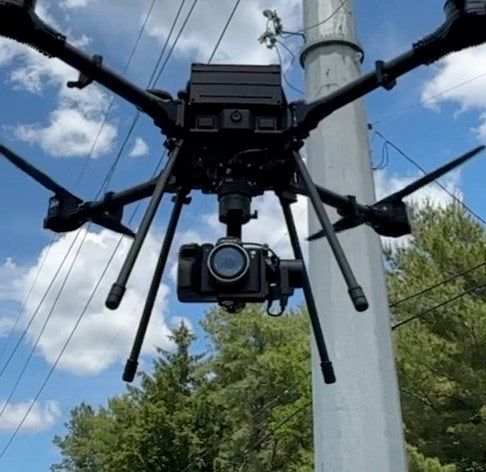How the 2025 Tariff War Is Affecting DJI Drone Sales
The U.S.–China trade tensions have escalated in 2025, and one of the most notable impacts is being felt in the consumer and commercial drone industry—specifically, in DJI's sales. DJI, the world's largest drone manufacturer, is facing multiple challenges due to rising tariffs, increased regulatory scrutiny, and growing political pressure in the United States.
Here’s a breakdown of how the current tariff war is reshaping DJI's operations and its presence in the U.S. market.
📦 Tariffs Are Driving Up DJI Drone Prices
In early 2025, the U.S. imposed new tariffs on Chinese electronics, including drones. As a result, DJI products—such as the Mavic 4 Pro, Mini 4, and Inspire 3—have seen retail prices jump by as much as 30–35%. These added costs are directly passed on to consumers and commercial buyers, making DJI drones significantly less competitive in the U.S. market.
For example, a drone that previously cost $999 may now retail closer to $1,300, putting strain on budget-conscious consumers and small businesses alike.
🚫 U.S. Customs Import Restrictions
Adding to DJI’s troubles, the U.S. Customs and Border Protection began blocking the import of certain DJI drone models in late 2024. This move, enforced under the Uyghur Forced Labor Prevention Act, cites concerns about supply chain transparency, even though DJI claims their production is outside the Xinjiang region.
This has led to supply disruptions and limited availability of specific drone models across U.S. retailers, causing delays and frustration for customers and resellers.
🏛️ Political and Security Pressure Mounts
In 2025, several U.S. lawmakers are pushing for further restrictions—or even a total ban—on DJI drones, citing national security and data privacy concerns. These efforts focus primarily on DJI drones used in agriculture, infrastructure monitoring, and law enforcement.
While no nationwide ban has been enforced yet, the possibility adds uncertainty to DJI’s future in the U.S. and creates hesitation among public sector buyers and corporate clients.
🇺🇸 Market Opportunities for U.S. Drone Makers
With DJI facing headwinds, domestic drone manufacturers have a unique opportunity to gain market share. U.S.-based companies like Skydio, Teal Drones, and others are stepping up production and improving technology to compete with DJI, especially in the government and enterprise sectors.
However, many industry professionals note that DJI still leads in terms of innovation, camera quality, and overall value—meaning the transition to U.S.-made alternatives may take time.
🧭 What This Means for Consumers and Businesses
If you're a drone enthusiast, photographer, or business reliant on UAVs, here’s what you need to consider in 2025:
-
Expect higher prices for DJI drones in the U.S. market.
-
Check product availability—some models may be harder to find due to import blocks.
-
Watch the news for updates on potential legislation or additional tariffs.
-
Evaluate alternatives from U.S.-based drone makers if you need government-compliant or tariff-free options.
Final Thoughts
The 2025 U.S.–China tariff war is undeniably affecting DJI's grip on the U.S. drone market. From price hikes and import blocks to political scrutiny, DJI faces significant obstacles. Whether these challenges permanently shift the market remains to be seen, but one thing is certain—change is in the air.




